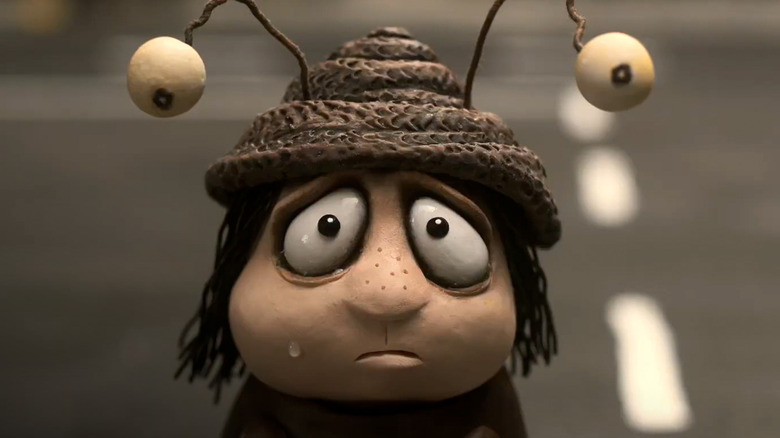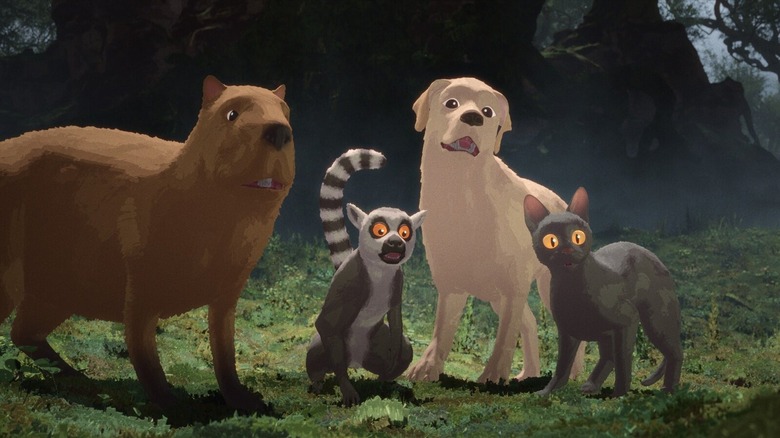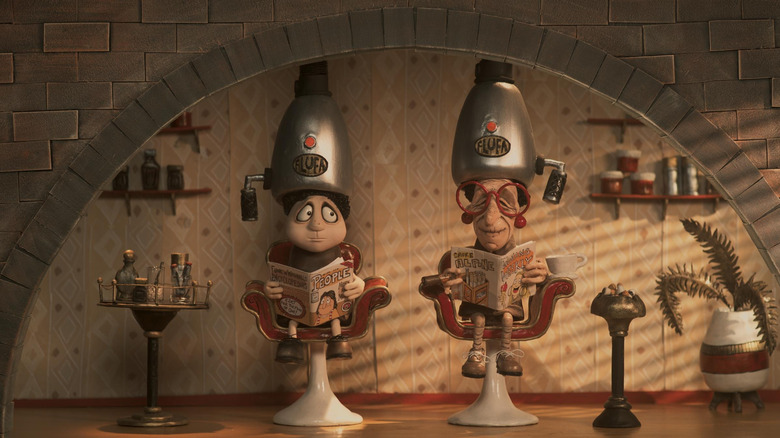Content warning: the following discusses the death of a pet, so please proceed with caution.
At the time of writing, it’s only been a few days since my family and I bid farewell to one of our dear beloved cats (who had been diagnosed with cancer a couple of months earlier). A grey and white sweetheart, he was a part of our lives for nearly 13 years. I’ve never met anyone, animal or human, who loved to be petted by and snuggle other cats and people as much as him (nor a cat who purred quite so loudly when he was happy). He was also a charming rascal and lovable weirdo who left us with countless anecdotes to regale ourselves with. To say my family and I are heartbroken would be putting it mildly.
In my sorrow, as I’ve always done whenever I lose someone dear to me, I’ve found myself drawn to media that speaks to my feelings. (Yes, for whatever reason, I’m apparently an emotional sadist who only really wants to watch sad stuff when I’m sad. Go figure.) As chance had it, I’d already made plans to check out what wound up being the perfect movie for my current state of mind: “Memoir of a Snail.”
The latest “clayography” written and directed by Adam Elliot is loosely inspired by events in the Australian filmmaker’s real life. This underseen 2024 critical darling centers on Grace Pudel (portrayed as a grownup by Sarah Snook of “Succession” fame, who speaks in her native Aussie accent to deliver a graceful, empathetic voice performance). Grace is, by her own admission, an introverted oddball in a family of oddballs. Growing up in 1970s Melbourne, Grace spends her youth being bullied (first because of her cleft lip and then, after going through puberty, her body type) and enduring a string of tragedies. This culminates in her and her fiercely loyal, protective twin brother Gilbert (voiced by Kodi Smit-McPhee as an adult) being sent to different foster homes — each neglectful or, in Gilbert’s case, outright abusive in their own way — on opposing sides of the continent.
Over time, Grace retreats even further into herself, hoarding snails and snail-themed items to deal with her loneliness (including the homemade snail hat she’s been wearing since she was a kid). As the film continued, though, it occurred to me that “Memoir of a Snail” has a remarkable amount in common with another underseen animated 2024 gem — one that, on the surface, seems like it’s worlds apart.
Memoir of a Snail and Flow are both about how we survive in a cruel world
“Flow,” the much-celebrated new animated feature from Latvian filmmaker Gints Zilbalodis, is about as far removed from “Memoir of a Snail” as an animated movie can get … that is, at a passing glance. Where the latter features practically non-stop voiceover narration by Snook, “Flow” is completely dialogue-free. It follows a pack of animals (a black cat, a yellow Labrador Retriever, a ring-tailed lemur, a capybara, and a secretary bird) as they find themselves stuck together in the same small boat trying to survive a catastrophic and effectively Biblical global flood. “Flow” also takes place in what feels like a slightly fantastical version of the real world, whereas “Memoir of a Snail” is very much based in our reality, contrary to what its stylized stop-motion imagery might suggest.
In terms of their aesthetics and tone, the pair seem equally unlike. Whereas “Memoir of a Snail” is shot in mainly locked-down compositions that draw from a fairly subdued color palette, “Flow” is brightly lit, with its virtual camera frequently moving like it would in an open-world video game. (Not for nothing, Zilbalodis made his feature-length debut on the similar video game-inspired animated film “Away.”) Along those same lines, “Memoir of a Snail” has a predilection for quirky details and raunchy whimsy that recalls the work of Jean-Pierre Jeunet (parents be warned, this is not a movie meant for kids), while “Flow” is an all-audience affair despite dealing with some heavy subject matter.
Global warming metaphors aside, however, “Flow” is basically about the same thing as “Memoir of a Snail.” Each of them explores how we deal with loss and the life events that rock our world forever, setting us adrift (be it in a literal and/or figurative sense). Losing a loved one or dealing with everyday human bullies the way Grace does might seem like small potatoes compared to an actual apocalyptic event, and there’s likewise a part of me that almost feels guilty for calling attention to my current woes in light of the unfathomable disaster the L.A.-based folks I work with have had to deal with since 2025 got underway. But “Flow,” like “Memoir of a Snail,” doesn’t minimize its characters’ personal suffering, no matter how trivial it comes across in the grand scheme of things. Case in point: a scene where one of the movie’s animals is separated from a treasured object they picked up — a rare source of comfort in the face of the environmental devastation unfolding around them — is depicted with the same earnestness as anything else that happens in the story.
Nobody survives alone in either Memoir of a Snail or Flow
Friendship and the role it plays in allowing us to survive a cruel world is a recurring theme in Elliot’s films, and “Memoir of a Snail” is no exception. As she gradually comes of age, Grace forms a most unexpected relationship with Pinky (a delightful Jacki Weaver), a far older and more experienced yet even more idiosyncratic soul who becomes a pillar of support for Grace throughout her many hardships and bouts of self-sabotage. To be sure, “Memoir of a Snail” recognizes we can often be our own worst enemies and that the people we care about, be they related by blood or members of our found family, are instrumental in helping us to not only stay alive but also to overcome our worst impulses.
So it also goes with the black cat in “Flow,” who essentially acts as the movie’s protagonist. Our nameless and extremely anxious four-legged hero spends the majority of the movie panicking and nearly getting itself killed, all the while struggling to figure out how to exist harmoniously with its newfound — and strikingly different — bedfellows. If that doesn’t make them one of the most relatable film characters in all of 2024, then, suffice it to say, we are very different people. Once again, though, it’s only through the kindness and support of others (even the smallest of gestures) that our lead makes it through thick and thin, a concept exemplified beautifully by the symmetry of the movie’s opening and closing shots.
The importance of community (no matter the shape or size) and the role it plays in supporting the most vulnerable members of society, helping them to live a full life even in the face of dire circumstances, is another common thread in not just “Memoir of a Snail” and “Flow” but a lot of 2024 and recent metamodern cinema in general (see also: the partly animated documentary “The Remarkable Life of Ibelin” and “The Wild Robot” for two other relevant, terrific examples). It’s a vital message we could all stand to take to heart as we head into the future, as well as an important lesson we all have to learn at some point in our own individual journeys.
These films also know it’s impossible to truly express our gratitude to those who’ve helped us along the way when the time comes to bid them farewell. Still, the very least we can do is take a moment and try, if only to briefly honor them, be they human or a pet (nay, a friend) who made our hearts just a little less lonely and filled even our darkest days with some much-needed light.
“Memoir of a Snail” is currently streaming on AMC+. “Flow” is available to rent or purchase on digital.







![Meet The Next Generation Of Mutants In Marvel’s Exceptional X-Men #6 [Exclusive Preview] Meet The Next Generation Of Mutants In Marvel’s Exceptional X-Men #6 [Exclusive Preview]](https://i3.wp.com/www.slashfilm.com/img/gallery/meet-the-next-generation-of-mutants-in-marvels-exceptional-x-men-6-exclusive-preview/l-intro-1737040750.jpg?w=1200&resize=1200,0&ssl=1)


